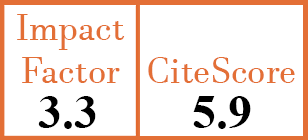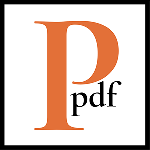Full Papers
Necrotising myopathy associated with anti-signal recognition particle (anti-SRP) antibody
F.H.C. De Souza1, R. Miossi2, S.K. Shinjo3
- Hospital das Clinicas HCFMUSP, Faculdade de Medicina, Universidade de Sao Paulo, Brazil.
- Hospital das Clinicas HCFMUSP, Faculdade de Medicina, Universidade de Sao Paulo, Brazil.
- Hospital das Clinicas HCFMUSP, Faculdade de Medicina, Universidade de Sao Paulo, Brazil. samuel.shinjo@gmail.com
CER10208
2017 Vol.35, N°5
PI 0766, PF 0771
Full Papers
Free to view
(click on article PDF icon to read the article)
PMID: 28281460 [PubMed]
Received: 23/12/2016
Accepted : 25/01/2017
In Press: 03/03/2017
Published: 15/09/2017
Abstract
OBJECTIVES:
Prompted by the few studies available in the literature, we analysed patients with necrotising myopathy associated with anti-signal recognition particle (anti-SRP).
METHODS:
We conducted a retrospective, single-centre cohort study involving 14 patients with anti-SRP antibody followed between 2001 and 2016.
RESULTS:
Patients had a mean age at disease onset of 40.7 years and were predominantly female and of white ethnicity. At disease onset, all patients had limb muscle weakness with median serum of creatine phosphokinase level of 8080U/L, 64.3% had constitutional symptoms, 50% dysphagia, 42.9% myalgia, 21.4% and 14.3% pulmonary and articular involvement, respectively. There were no cases of cutaneous, neurological or cardiac involvements. Notably, 21.4% of patients had previous exposure to statins. Moreover, with the exception of one patient, all received methylprednisolone pulse therapy and/or human intravenous immunoglobulin (IVIg), as well as prednisone and different immunosuppressive drugs or rituximab. Relapse occurred in 64.3% of the cases. However, most patients had significant recovery of muscle strength, with half no longer using glucocorticoids and the remainder on a weaning regimen with low dose prednisone.
CONCLUSIONS:
Unlike the cases described in the literature, there was a high frequency of extra-muscular symptoms in the patients studied. Moreover, one fifth of patients had previous exposure to statin use. There was a high relapse rates, but with good clinical and laboratory recovery, especially with pulse therapy regimen of methylprednisolone and/or IVIg.


